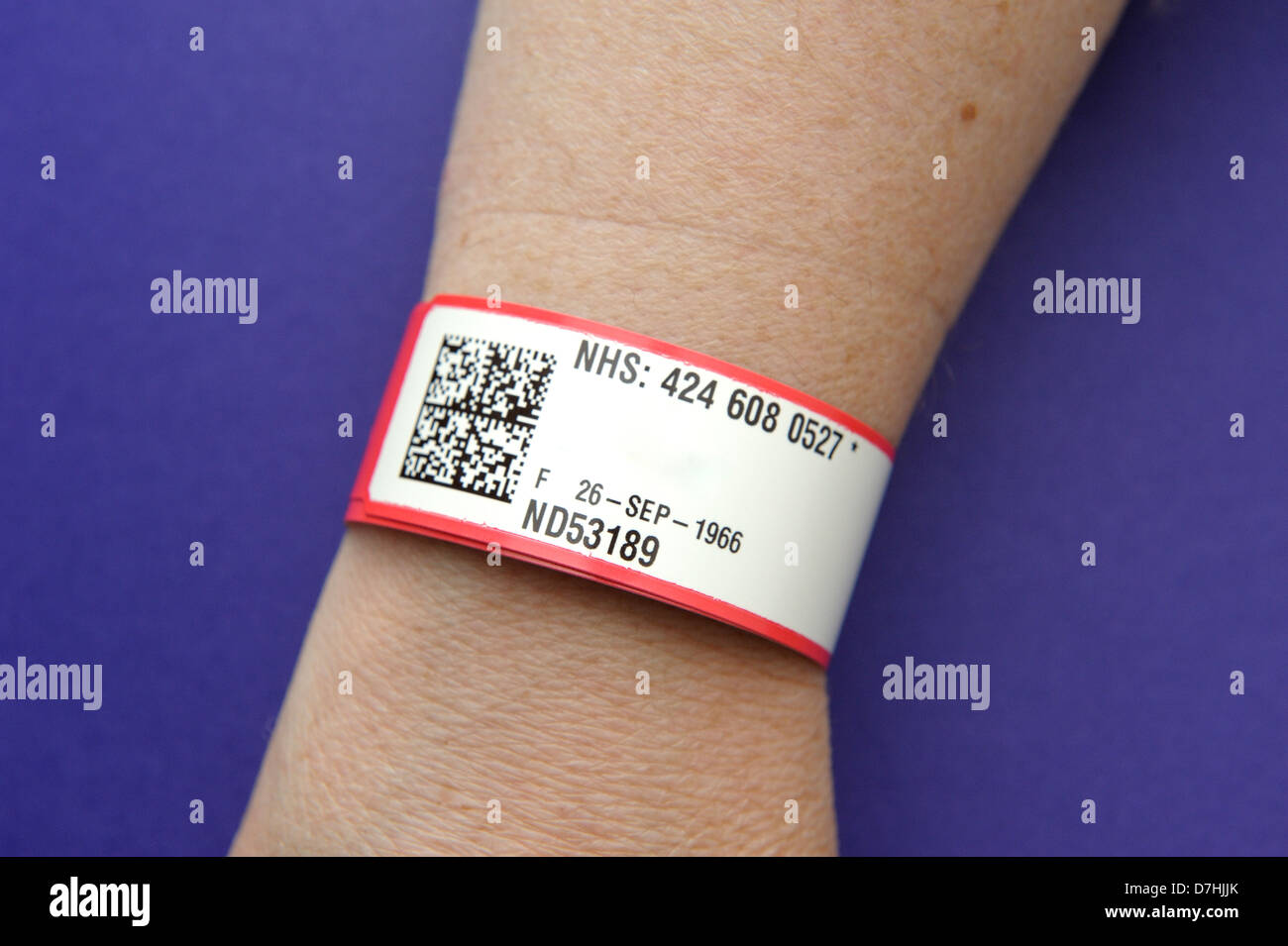Discovering the Different Sorts Of Patient Identification Band Utilized in Medical Facilities
In the intricate globe of health care, the critical role of Patient Identification bands commonly goes undetected. These bands, differing from straightforward paper wristbands to sophisticated RFID bands, form the foundation of Patient safety methods, ensuring precision in Patient Identification. Yet, the vast variety of these bands, each with its unique benefits and limitations, is commonly ignored. As we browse with this topic, one may acquire understanding into the refined intricacies and important relevance of such bands in clinical facilities.
Recognizing the Significance of Patient Identification Bands
While they might appear like mere accessories, Patient Identification bands play a vital role in clinical centers. These bands serve as an important tool for confirming Patient identity, protecting against clinical errors associated to misidentification. Patient Identification bands additionally help in simplifying administrative tasks, making sure accurate record-keeping and billing.
Traditional Paper Wristbands: Their Use and Limitations
Conventional paper wristbands have actually been a staple in Patient Identification across numerous clinical facilities. While their usage prevails, they nurture certain limitations that might affect their efficiency in Patient administration. This section will concentrate on the extent of their application and the inherent downsides connected with their use.
Paper Wristbands: Use Extent
In the realm of Patient Identification, paper wristbands have actually long held a critical role. These bands are normally made use of in outpatient settings, where the Patient's remain is short-term. The wristbands consist of important info such as the Patient's name, date of birth, and a distinct Identification number. This basic, yet reliable system, enables physician to quickly and accurately recognize patients, guaranteeing the appropriate therapy is provided. Paper wristbands are also used in emergency situation scenarios, where rapid Identification is extremely important. Their use encompasses occasions like blood contribution drives and mass inoculation programs, further highlighting their flexibility. Despite improvements in innovation, the simple paper wristband remains a cost-effective and reliable remedy for Patient Identification in various healthcare scenarios.
Limitations of Paper Wristbands
Regardless of their extensive use, paper wristbands are not without their drawbacks. Their physical toughness is just one of the significant restrictions. Exposure to water, sweat, or misuse can render them unreadable and even trigger them to disintegrate. On top of that, paper wristbands usually do not have the technological capabilities of even more contemporary choices, such as barcoding or RFID chips, limiting their functionality to merely presenting composed info. The inability to update or change the data on the wristband is another drawback. If the info is transcribed, readability can be jeopardized, leading to potential misidentification. Lastly, paper wristbands can cause pain or skin irritation to some people, specifically when used for extensive durations.
Barcoded Wristbands: Improvements in Patient Identification
While Patient Identification has long been a crucial element of healthcare, the introduction of barcoded wristbands indicates a considerable leap ahead. These bands leverage the simplicity of barcoding innovation, permitting for Patient info to be rapidly scanned and accessed. They enhance the speed and accuracy of Patient Identification, lowering the threat of medical mistakes connected to misidentification.
Radio Regularity Identification (RFID) Bands: a Step In The Direction Of Futuristic Healthcare
The evolution of Patient Identification bands has produced the emergence of Superhigh frequency Identification (RFID) Bands (patient identification band). These innovative devices existing essential benefits for medical care facilities, supplying a more reliable and technically progressed methods of Patient Identification. The implementation of have a peek at this site RFID in healthcare is a significant step towards a much more advanced strategy to Patient management and safety
Understanding RFID Bands

RFID Bands: Trick Advantages
Largely, these bands enhance Patient safety by giving precise, instantaneous Identification, thus reducing medical errors. RFID bands can save a huge quantity of Patient information, consisting of medical history and allergies, allowing personalized care. In general, RFID bands stand for a substantial improvement in Patient Identification innovation, benefiting both clients and healthcare suppliers.
Executing RFID in Medical Care
As we enter a technically advanced period, the execution of RFID bands in health care ends up being increasingly important. These bands give a smooth way to track and recognize individuals, ensuring their safety and click for more info enhancing performance in therapy procedures. RFID bands use various advantages over standard Identification methods. They can store a substantial quantity of information, consisting of the Patient's medical history and treatment plans, which can be quickly accessed by doctor. This data helps medical professionals make informed choices pertaining to the Patient's treatment strategy. Furthermore, RFID bands minimize medical mistakes by providing precise Patient Identification, which is essential in avoiding misdiagnosis or wrong medicine administration. Thus, the execution of RFID bands is a significant step towards enhancing Patient safety and healthcare delivery.

Color-Coded Wristbands: Aiding in Quick and Accurate Medical Diagnosis
In the bustling setting of a medical facility, color-coded wristbands have actually become important tools for swift and accurate Identification of an individual's clinical condition. These wristbands, put on by clients, carry particular shades that represent various medical conditions or statuses. As an example, red could indicate allergy risks, while yellow may signify a loss risk. This system is made to use instant aesthetic cues to doctor, enhancing Patient safety and security and care quality. In emergency circumstances, making use of these wristbands permits fast decision-making. Nevertheless, the efficiency of color-coded wristbands relies on the uniformity of color interpretation throughout health care organizations, needing usual standards for constant application.
Methods for Effective Implementation and Administration of Patient ID Bands
Achieving ideal use of Patient Identification bands demands a well-structured technique for their implementation and monitoring. The initial step entails training all health employees on the significance of properly applying and checking out these bands. Hospitals must systematize the use of ID bands across all departments, guaranteeing uniformity and minimizing discrepancies. Routine audits should be conducted to validate adherence to policies and to remedy any type of variances. Patient education and learning is likewise essential; individuals should recognize the purpose of the bands and the need for their continuous wear. patient identification band. It's essential to have a backup strategy in area, such as barcode scanning or biometrics, to make sure that Patient Identification is never jeopardized.
Verdict
Patient Identification bands are vital in medical facilities to make important source sure security and precision. Traditional paper, barcoded, RFID, and color-coded wristbands each hold unique benefits, ranging from cost-effectiveness to advanced data storage space and instant clinical informs. Reliable implementation and administration of these bands can dramatically reduce clinical mistakes, increase effectiveness, and improve overall Patient treatment. Hence, understanding and making use of these Identification tools is vital for keeping high standards in health care.
These bands, varying from simple paper wristbands to innovative RFID bands, form the backbone of Patient safety methods, ensuring accuracy in Patient Identification.The advancement of Patient Identification bands has actually brought about the emergence of Radio Frequency Identification (RFID) Bands. In general, RFID bands stand for a significant development in Patient Identification modern technology, benefiting both people and healthcare suppliers.
RFID bands decrease medical errors by giving exact Patient Identification, which is vital in preventing misdiagnosis or incorrect medication administration. Patient education and learning is additionally vital; individuals need to recognize the function of the bands and the requirement for their consistent wear.